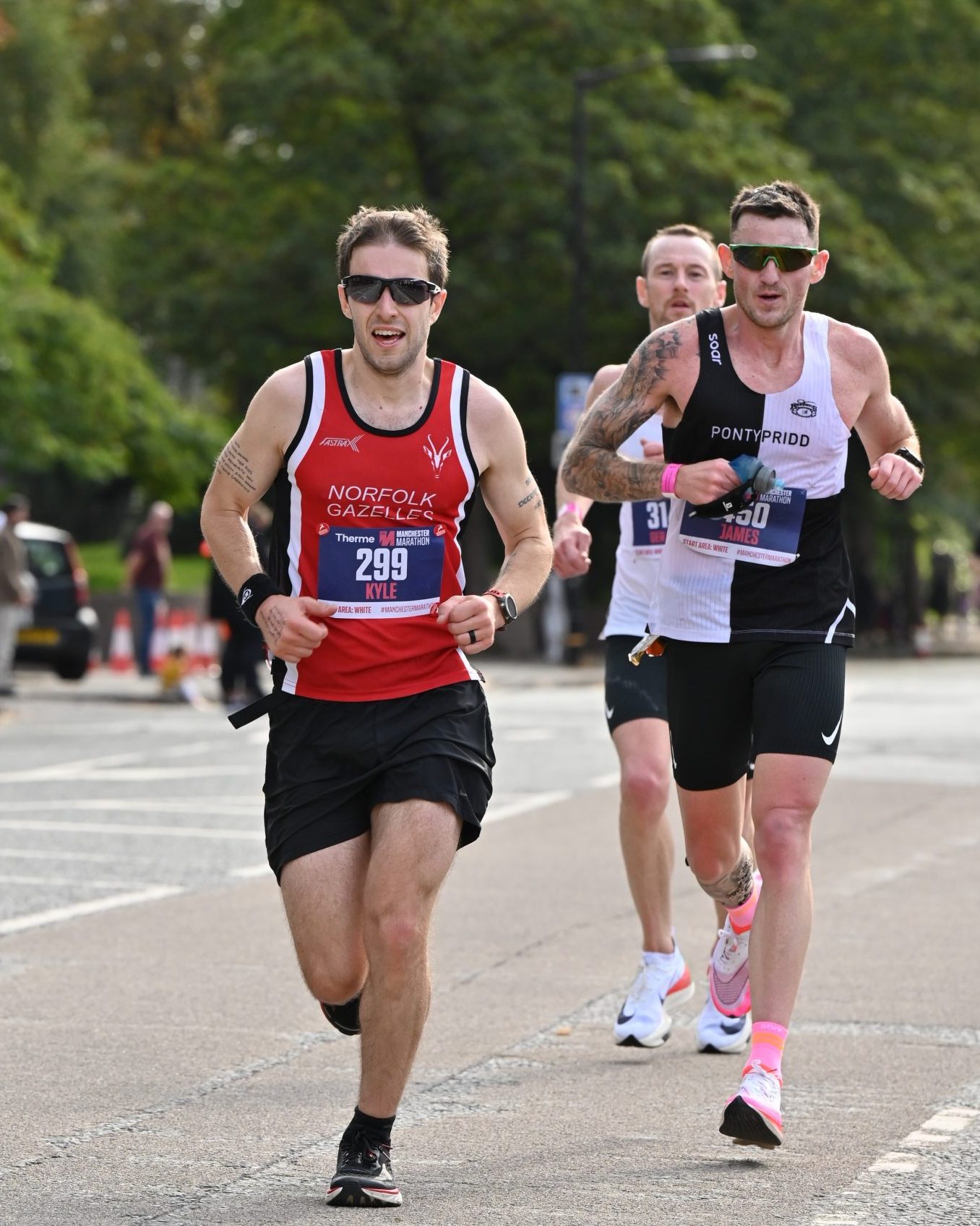It’s a well-established routine to race in the final 4-6 weeks of marathon training, with two of the most popular and appropriate options, being a half marathon or a 20-miler. I’ve had numerous discussions with clients over the last few years who’ve not considered all the factors, so I’ll share some thoughts here.
Training run, marathon pace or race effort
For the purposes of this blog I’m going to assume that you’re looking to run a personal best in the marathon to come. If you’re not, then any of these options can apply, and the only advice I’d offer is to listen to your body when deciding which you choose, prioritising getting to the start of the marathon in good shape and injury free.
Essentially you have three options:
1 – treat it as a training run, taking it fairly easy, perhaps throwing in a few miles at marathon pace. It’s mostly about the enjoyment of the day and being around people. It can be useful if you’ve not raced in a while as well.
2 – Marathon pace, running the distance at your target marathon pace. This allows you to practice your race day fuel and hydration strategy.
3 – Race effort, although tiring and potentially not as helpful for trying race fueling, you get a better sense of your current fitness which helps you set appropriate goals for your marathon, perhaps showing you that you could run faster than expected.
Half marathon
These will often fall 6 weeks before marathon season starts, so I’d lean towards Marathon pace or Race effort only, without a proper taper, just slightly lower mileage for the 7-10 days before. By this point in training, 13 miles as a training run wouldn’t be much point unless you’re taking a deload week (something I don’t feel is often needed).
Marathon pace half marathon – there’s some merit to this, especially if your training hasn’t been going quite as well as you’d hoped, or pacing is something you need to work on. Equally it can be a nice stepping stone for anyone looking to make a significant improvement on their previous marathon PB.
Race effort half marathon – find out how fit you are right now and what sort of time you can expect for your marathon. Without much of a taper prior to the half marathon, you can usually get a fairly accurate projected marathon time by the time tapering is factored in.
20 miles
Typically around 4 weeks before your marathon, you have all three options available.
Training run 20 miles – you’ll already running 18-20 miles in your long runs by this point anyway, so a little race experience won’t do any harm. It’ll be a productive training run and there’s no need to taper in any way. Be disciplined in your plan though and don’t be sucked into running it harder for the sake of getting a faster time. It won’t tell you anything extra, but will fatigue you more in the final weeks of training.
Marathon pace 20 miles – a small taper including an easier long run the week before and lower mileage the week of the race. Since the taper is small, this is an excellent way to gauge how marathon pace will feel on race day. I’d still suggest a day of carb loading as a great way to get a more accurate reading of how fit you are, and as a way to test your carb loading strategy for the marathon.
Race effort 20 miles – take a 10-14 day taper to be as ready as possible and get the best time to project your marathon finish. A 24-36 hour carb loading strategy is a good idea here also, and will boost your performance. The race effort will take it out of you, and for runners looking to take over 3 hours to cover 20 miles, this one might be an option to avoid due to the recovery time needed afterwards which would interfere with the final 1-2 weeks of training before your marathon taper.
Whether you choose a half marathon or 20 mile race to take part in, consider the options above and how they relate to your own situation to ensure you get what you want and need from the event.
Written by Kyle Brooks, Running Coach based in Norwich, Norfolk

